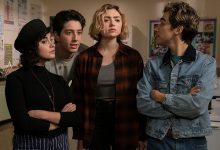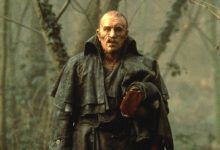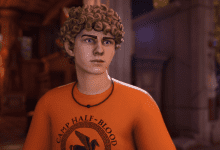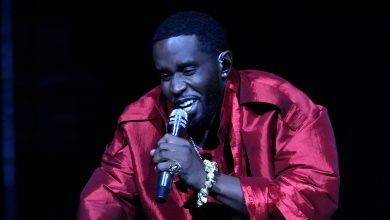‘Pachinko’ Creator Soo Hugh Shares Hopes for Season 3 and More Asian-Led Shows: “We Can’t Get Complacent”
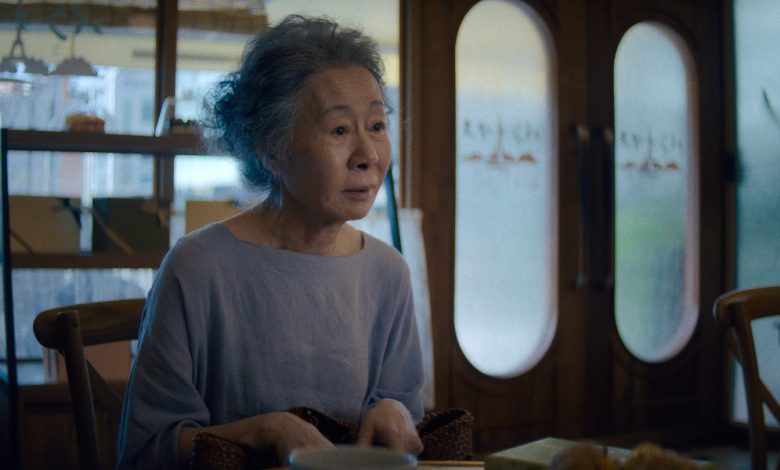
[This story contains spoilers from the season two finale of Pachinko, “Chapter Sixteen.”]
Soo Hugh knows full well about the challenges of trying to get anything made for television. After cutting her teeth as a writer and producer on the CBS sci-fi mystery Under the Dome, ABC sci-fi drama The Whispers and first season of AMC horror anthology The Terror, the Korean American showrunner has spent the better part of the last six years adapting Min Jin Lee’s epic historical novel Pachinko into a breathtaking Apple TV+ series, which just wrapped its sophomore run on Oct. 11. (Read a full breakdown of the season finale.)
One of the most ambitious shows on television, Pachinko examines the enduring impact of the Japanese occupation of Korea on four generations of a Korean family. Whereas the first season found the characters fighting for their own survival and the preservation of their culture, the second found the Baek family, after surviving World War II, reckoning with their own aspirations for a better future — all while protagonist Sunja (played by Minha Kim in the past timeline) wrestled with a devastating secret that could tear apart her family.
In a wide-ranging chat with The Hollywood Reporter, Hugh opens up about the experience of making the second season of Pachinko (including the decision to remake the famous opening credits sequence), the challenges of trying to tell a universal story with subtitles, and how she really felt about the first season being snubbed at the Emmys.
While offering her thoughts on the state of the business, Hugh also offers some insight into her next two big projects: a film adaptation of F. Scott Fitzgerald’s last completed work and a long-gestating miniseries starring Tom Hiddleston.
***
You chose to adapt Pachinko as a multigenerational saga rather than a single coming-of-age story. In doing so, you found a way for the multiple timelines of the show to remain in constant conversation with each other. But the opening credits sequence is the only time viewers get to see characters from different decades interact. Why did you decide to remake that sequence for season two?
It’s amazing how close we came to not even having a title sequence this season. Season one’s title sequence wouldn’t have worked for season two, because half those actors are not on the show [anymore]. And then for season two, we couldn’t figure out how to schedule a shoot for the title sequence. So there was a moment where we were just going to use the Pachinko card, which would’ve felt really weird for this show. Finally, one of our producers figured out what we were going to do. It was sort of renegade style; it took me back to film school days.
While the main unit was shooting, we took over the Pachinko parlor with a skeleton crew, and that’s why if you look at the actors, they’re dressed in clothes from certain scenes. So Minha [Kim] is dressed in her morning clothes, and that’s because we literally had to pull her from that scene where she’s at a funeral, and we said, “Let’s dance.” It was so run-and-gun and it was her only way to have it, but I think that’s why you get this feeling of spontaneity among the cast. When we did the big conga line at the end, that was shot on a Saturday. It was shot on a day off, and they graciously all came in to do it.
Why did you decide to use “Let’s Live for Today” by The Grass Roots for this title sequence?
The first season is about, “Live for today. This is what we have.” This season, all of a sudden, the stakes felt more emotional. And if you listen to the lyrics of the song, it’s a love song, whether you interpret that love song from a parent to a child or to a couple in love. That really felt more fitting to this season.
Compared to the first season, the second feels larger in scope and scale — you have more storylines and characters to juggle, and you had to shoot on two different continents with a largely non-English speaking cast. Were there any particular lessons you learned when making the first season that you were able to apply this time around?
We learned so much in season one. The learning curve was just so steep. Season one, we had so much more time, too. I think we shot and wrote season one over three years. This season, [Apple] wanted the show much faster, and this is a very hard show to do in that fast style. I think the biggest thing I learned — and it’s not just even about this show, and I think it’s also about life in general — is that, somehow, it all gets done. You stress, you worry and you go over things, and what’s amazing about working with so many people who are so talented and smart is you’ll have this challenge, and it’ll feel like, “Oh, rats! We’re screwed!” And yet, bit by bit, you get it done. It’s pretty amazing.

You also have the unique challenge of trying to lead a group of people who don’t always speak the same language, so you had to work with interpreters to make sure all of your cast and crew members were on the same page. Did you find it easier at all in season two?
In season one, the interpreters were probably my biggest concern, like, “Oh, they’re going to be so slow. They’re never going to be able to convey my thoughts.” I think because I was so pleasantly surprised by how well it went in season one, it wasn’t perfect, but you do realize there’s something about cinema that is a universal language. People really do understand how filmmaking works. So in season two, it was nice not to have that worry and just have that off our plate. The actors came into season two so much more confident, and they really know these characters so much better. They really have ownership of these characters, so there’s a shorthand. For season one, I think we probably had hours and hours of meetings with each actor talking about the characters, and [this season] I was able to pass along scenes and be like, “Read this,” and it was just really fluid.
Most of the characters in Pachinko are able to speak at least two different languages, and they’re constantly in conversation not only among themselves but also with the outside world. Going into this season, how did you think about the use of Korean, Japanese and English, and the way the characters are able to code-switch between those languages?
I love that question. In season two, it’s so much more apparent because of [Sunja’s children] Mozasu and Noa — that [next] generation really sits at that cusp. And especially when you think about Mozasu, he was born in Japan — he and Noa both were. But for Mozasu, he’s like, “I don’t know Korea,” and yet he hears Korean spoken in the house. So if you look at Mozasu’s [subtitles], there’s a lot of blue-yellow, blue-yellow, blue-yellow, and it’s so natural for him. He doesn’t even think about when he’s switching, and that was the most important thing. We wanted to make sure you never see the actors in their performance thinking about it. It should just be as natural as possible, which is really hard when you think that Eunseong [Kwon, who plays the youngest Mozasu] is 9 years old and didn’t speak Japanese [prior to the show].
Despite the growing desire and hunger for diverse stories told in different languages, the idea of international storytelling — with subtitles and all — is still not as widely received as stories told in English. I think the best indication of that is the fact that Pachinko, despite being a critical hit, was largely overlooked at the Emmys in 2022. How did you feel about the way the first season was received in the Western world? And how do you hope Pachinko will be able to challenge this idea that subtitles shouldn’t be an impediment to telling and receiving a universal story?
That is a really smart question, and I think it’s a question that is so complicated to unpack. The Emmy things were disappointing, but I wasn’t angry. And the reason why is because no one knew of our show. The critics knew our show, and I am so, so grateful for the critics. I can’t tell you how gratifying it is that people, who are smart and who watch as much TV as they do, have embraced our show. But aside from the critics, people just didn’t watch our show as much as we wanted. I think we were very naive to think that we got over that barrier of subtitles, right?
And especially when you think about the way people watch TV. They watch TV while they’re also cooking, or playing Roblox, or while they’re internet surfing. That is really hard with subtitles. It’s so funny — I used to be so anti-dubbing. I used to be like, “That is a sin. People who watch shows [with] dubbing are just the worst people in the world.” And I have done a full 180. I think, “You know what? It’s not the ideal way I want people to watch shows, but if watching a show dubbed in English is the way that you’re going to be pulled into this, then fine.” I think we wanted our audience to jump to be ready for this, and we just never built them the bridge. That’s why I respect shows like Shōgun so much. We need more of these shows that are the bridges. Pachinko is part of that bridge, but really that bridge is only half-built.
The entertainment industry has significantly changed since you first set out to adapt Pachinko six years ago. Unfortunately, many of the promises to diversify Hollywood, which were made at the height of a global pandemic, have been rolled back amid cost-cutting measures and labor disputes. Where do you think we stand in terms of diversity and inclusion right now?
I think we are going to live in some really hard times for the next few years, in terms of representation. I think the most disappointing thing is you get so hopeful when you get a Beef or when you get a Pachinko, and you think, “Finally, we’ve climbed that barrier and we’ve shattered the glass,” and then you just realize whenever times get hard, that glass just comes back in place. I think there are no easy solutions. I don’t think people understand that we can’t get complacent. I think we need to keep supporting these shows. We have to show up for [shows like] Beef, Shōgun — we just have to do it, because that, at the end of the day, determines whether these shows succeed or not.
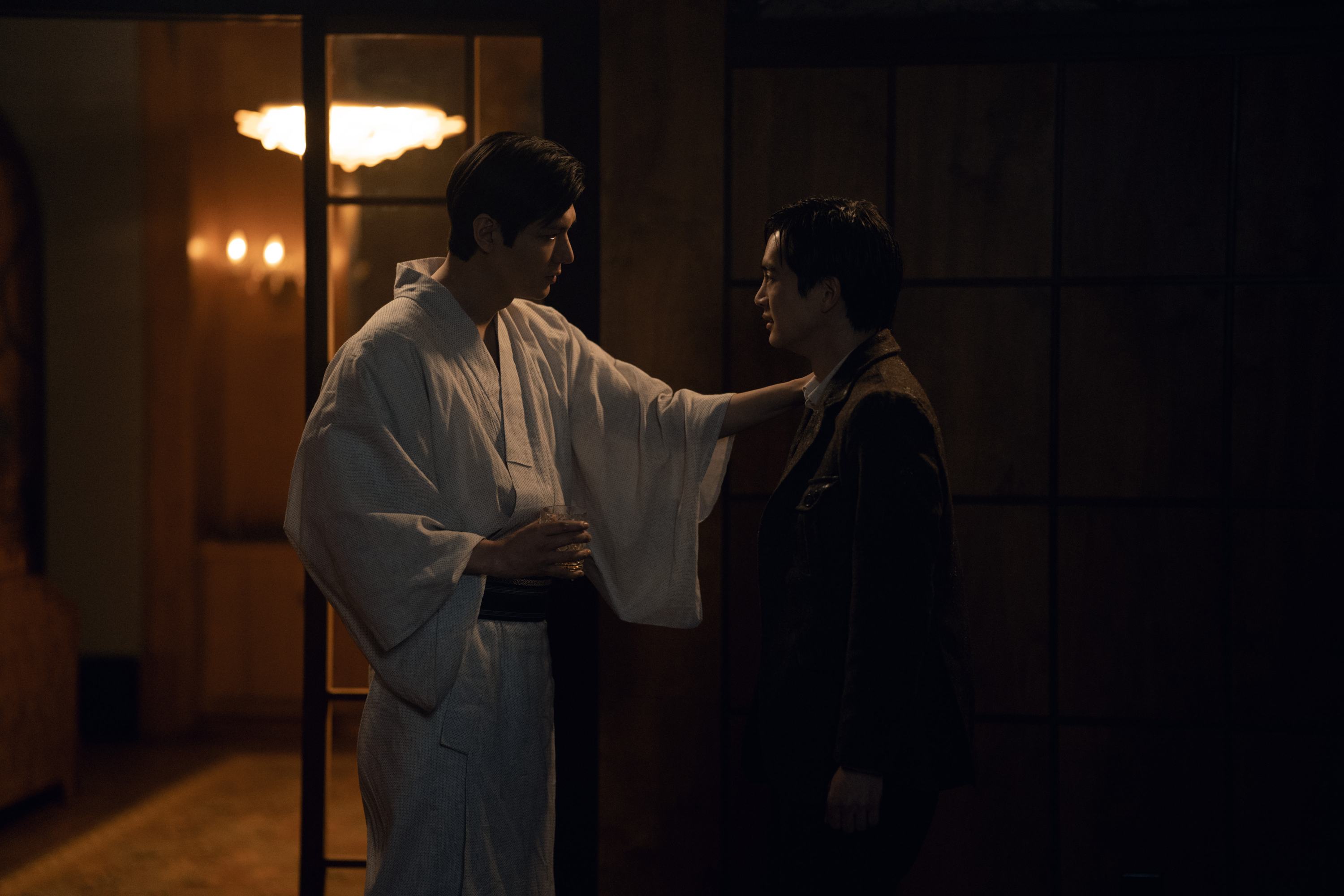
Was that part of the reason you decided to start your own production company, Moonslinger, between making seasons of Pachinko?
I felt like there were so many stories that can still be told and that needed to be told but, how do you do it in a way that can also, let’s be honest, tickle the marketplace, right? I think it’s always that dirty business of mixing art and commerce together, and you can write it and be naive, or you just go with it and say, “Let’s do it — and let’s do it well.”
To your point, given the generally risk-averse marketplace and the current state of the industry, Hollywood executives seem to want to bank on existing IP over developing original ideas. So many of the big, successful projects these days are some kind of extension of a successful property or a book-to-screen adaptation. What’s your take on the stranglehold that IP has on the business right now? How has that changed the way you make television?
I like IP. I only do adaptations, so I don’t think of IP as selling out, I’ll say that. I think the big thing, though, is in the next few years, stories have to churn faster. I think the days of that slow burn are gone, at least for now. There used to be the glory days where it took four episodes [to get an audience hooked]. It took me four episodes of The Wire to love it. That day is gone. If your audience has not fallen in love with your show in the first episode, it’s just not going to make it. We can rail against it and be angry, but I always say, “Learn the rules before you know how to break them.” This is what I was taught when I was in my art classes. So if this is the sandbox that we’re playing in, let’s just figure out how to break the rules within that sandbox, because it’s doable.
You were recently tapped to write and direct a feature adaptation of F. Scott Fitzgerald’s 1934 novel Tender Is the Night for Searchlight Pictures. It has also been over two-and-a-half years since Apple announced that Tom Hiddleston would star in the limited series The White Darkness, which you were supposed to write and produce. What is the status of those projects, and why were those the kinds of stories that you wanted to tackle next?
I’m writing Tender is the Night right now. I read that book so long ago and just have always loved that book. I think there’s something about this story about these three people that consume one another. It just has this iconic love story, love triangle feel. I think what I’m excited to bring is a little bit of a modern sensibility from my point of view, and also to just play with race, gender and history in elastic ways. I want to make it bold.
We are still banging away at The White Darkness, trying to just get it made. It is such a beautiful story. It’s a true story based on [the British explorer] Henry Worsley. Right now, we have Kerry Ehrin from The Morning Show writing it, and she’s really focusing on just the marriage. [This is] a man who said, “I’m going to trek across Antarctica on my own.” What does an obsession like Henry’s do to a marriage? What does that do to a family, and what is he searching for? It’s so good.
Hopefully, very soon, I’ll have another project to announce that I’m really, really excited about, that’s very different from Pachinko, but I think and I hope it’s still quality television.
Where are you right now in terms of renewal talks with Apple for Pachinko?
This is really, now, one of those things that’s so out of my hands, and I think Apple’s also waiting to see how the show does. I think we’re really trying to fight for a third season — and it really comes down to viewership.
You previously said that you wanted to make four seasons of Pachinko. Is that still the case? Or are you now hoping to go beyond that?
In some ways, it feels like there’s a version where one or two more seasons does feel like the right way to end this. People can’t live forever. At some point, life happens, time passes and people pass, but it does feel like there’s another season or two to eke out.
Viewers haven’t gotten a chance to see old Hansu in the 1980s; quite frankly, we don’t even know if he is still keeping tabs on Sunja and her family from afar, let alone if he is even still alive. If (and when) you choose to introduce an older version of Hansu into the story, would you choose to keep Lee Minho and use makeup to age him up, or would you look to bring in an older actor?
You should be a producer. I will say that I can’t speak to it now, but you’re asking the right questions.
***
The full first two seasons of Pachinko are now streaming on Apple TV+. Read THR‘s break down of the season two finale.
Source: Hollywoodreporter
Related Posts
- Roundball Rocked: With NBA Return Looming, NBC Purges Scripted Roster
- SoundCloud Says It “Has Never Used Artist Content to Train AI Models” After Backlash on Terms of Service Change
- Fox News’ Camryn Kinsey Is “Doing Well” After Fainting on Live TV
- Kerry Washington and Jahleel Kamera in 'Shadow Force.'
Courtesy of Lionsgate
…
- This Alternative Artist Landed a Top-20 Chart Debut With an Album Made Almost Entirely on His Phone


